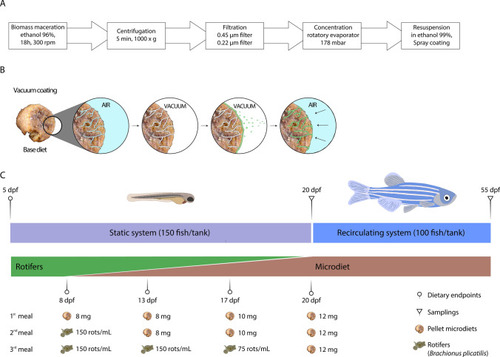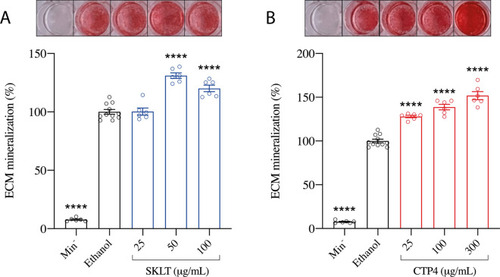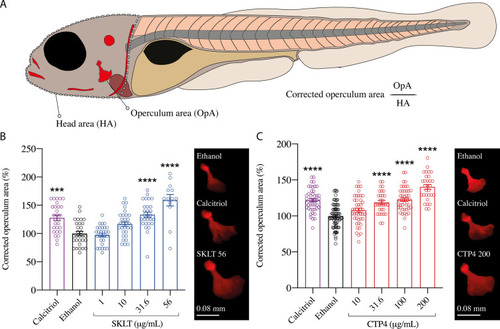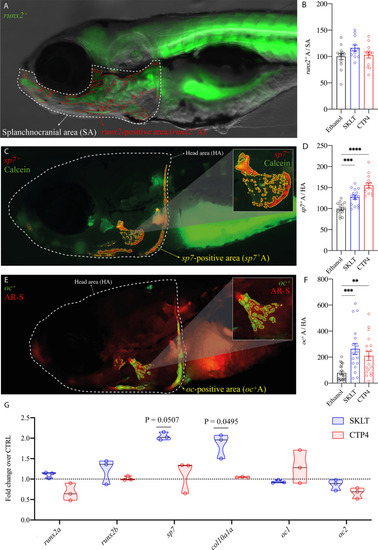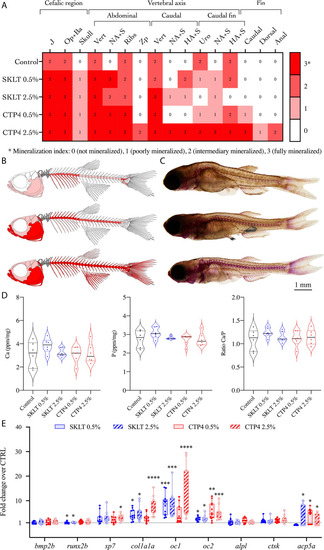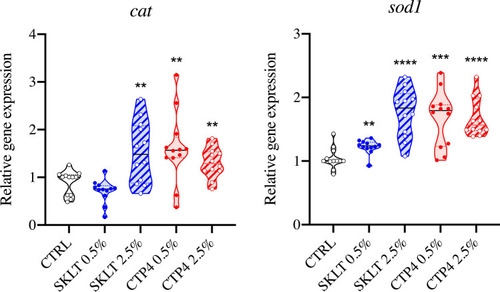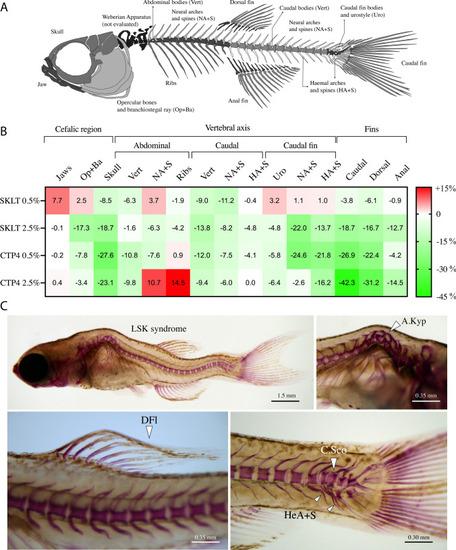- Title
-
The osteogenic and mineralogenic potential of the microalgae Skeletonema costatum and Tetraselmis striata CTP4 in fish models
- Authors
- Carletti, A., Rosa, J.T., Pes, K., Borges, I., Santos, T., Barreira, L., Varela, J., Pereira, H., Cancela, M.L., Gavaia, P.J., Laizé, V.
- Source
- Full text @ Cell. Mol. Life Sci.
|
|
|
Mineralization of the extracellular matrix (ECM) of VSa13 cells exposed to ethanolic extracts prepared from |
|
Mineralogenic effect on the operculum of 6-dpf zebrafish larvae exposed to |
|
Expression of osteoblast differentiation markers in 6-dpf zebrafish larvae exposed to ethanolic extracts of |
|
Mineralization status of zebrafish juveniles fed diets supplemented with the ethanolic extracts of |
|
Effect of the ethanolic extracts of |
|
Incidence of skeletal anomalies in zebrafish juveniles fed diets supplemented with the ethanolic extracts of |

